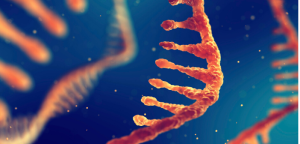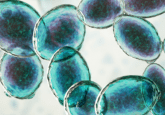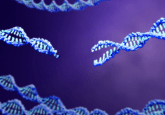Synonymous mutations break their statement of neutrality

Although previously thought to be neutral, research in yeast suggests that synonymous point mutations may have strongly nonneutral effects.
A group of researchers from the University of Michigan (MI, USA) have evidence that synonymous, or silent, mutations can be harmful to yeast growth. Using budding yeast, researchers compared the fitness of over 8,000 mutant strains containing different types of mutations in one of the 21 genes targeted. Importantly, this study demonstrates that synonymous point mutations should not be ignored, as they often have been, when investigating the mutations underlying certain diseases in humans.
Synonymous mutations account for almost one-third of point mutations. They describe single-base misspellings in codons that do not change the amino acid expression. Nonsynonymous mutations, meanwhile, do change the amino acid expression and resulting protein sequence. Finally, nonsense mutations encode stop codons, wrongly cutting the protein sequence short.
It has been assumed in the past that because synonymous mutations do not change the amino acid expression, and therefore protein sequence, they have no effect on the organism. The current research builds upon anecdotal evidence of some synonymous mutations being nonneutral.
 Cas7-11 made to fit into a single viral vector
Cas7-11 made to fit into a single viral vector
Researchers re-engineered CRISPR protein Cas7-11 to fit into a single viral vector, making it more viable for RNA editing in living cells.
Researchers introduced these three types of point mutations to different mutant yeast strains using CRISPR/Cas9 to compare how rapidly the yeast reproduced in relation to the control strain, denoting the effect of the mutation. They discovered that 75.9% of synonymous mutations were significantly harmful and 1.3% were significantly helpful.
“The previous anecdotes of nonneutral synonymous mutations turned out to be the tip of the iceberg,” reports lead author, Xukang Shen. “We also studied the mechanisms through which synonymous mutations affect fitness and found that at least one reason is that both synonymous and nonsynonymous mutations alter the gene-expression level, and the extent of this expression effect predicts the fitness effect.”
Senior author Jianzhi Zhang was shocked by their results: “Our results imply that synonymous mutations are nearly as important as nonsynonymous mutations in causing disease and call for strengthened effort in predicting and identifying pathogenic synonymous mutations.” In the future, researchers hope to explore how their findings apply to other organisms as they see no reason why their results should be restricted to yeast. This study illuminates the potential role of synonymous mutations in causing disease and the importance of recognizing these mutations as disease indicators.





